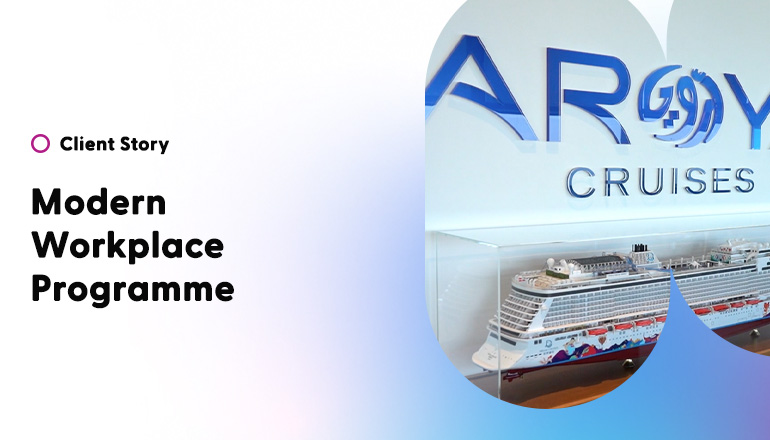In the modern workplace, adopting a Device lifecycle services strategy benefits every department in the organisation including IT, Finance and Operations. In this two-part blog series Insight’s Financial Solutions Manager, Matt Fox, highlights nine of the core benefits that Device lifecycle services offers the Finance Department.
At Insight, our Financial Solutions team has long been involved in conversations about the growing demand for Device lifecycle services. Most organisations that want to offer a better end-user experience for their employees understand the benefits that Device lifecycle services delivers to their IT teams. It removes the burden of maintaining and updating devices that, as a result of hybrid working, can be dispersed throughout the world. We are now increasingly finding that challenging market conditions and the need for greater operational efficiencies are leading to technology being aligned to a services contract. This in turn has heightened the need for organisations to understand the financial benefits of Device lifecycle services.
The benefits largely align with the core financial objectives of managing income and expense to deliver profitability, protecting the organisation and helping to drive the business forwards. Plus, there is also the delivery of shareholder value and equity to take into consideration. Insight’s Financial Solutions team is dedicated to helping clients understand how to use their budgets most effectively to ensure maximum ROI while protecting against inflationary pressures. With that in mind, let’s take a look at four recurring themes that are the basis of our discussions, and the benefits that Insight’s Device lifecycle services model offers finance professionals.
Lower corporation tax
When you change the financial structure of supplying devices to your employees – whether that’s through leasing or supplier payment terms – your organisation can reduce its corporation tax charge. Essentially, the full sum of payments made under the lease agreement within that accounting year becomes a pre-taxable operating expense. In turn, this serves to reduce a business’s corporation tax. Any additional operating expense tends to be offset by paying less corporation tax. This in turn can have a positive impact on an accounting close driven by preserving Shareholder Equity
This all takes place while giving employees access to the latest, updated devices which helps increase connectivity, productivity and the modern working environment. This may not exactly be news for finance teams as many businesses already make use of leasing structures for things like vehicles, plant or machinery. But the idea of leasing devices may be something they haven’t yet considered. It is becoming more relevant to organisations that are adopting modern workplace practices like hybrid working.
Preserve access to capital
Perhaps a lesser-known advantage of Insight’s Device lifecycle services is that by using the provider’s financial offer, an organisation doesn’t have to raise funds from its usual source of capital funding. By maintaining a separate financial relationship for Device lifecycle services, you retain access to your regular capital funding arrangements for more strategic activities or financial contingencies.
We always talk with clients about contingency planning, especially now as interest rates and inflation are soaring. We advocate best practice for retaining capital, cash, and protecting their own contingencies. The impact of not being able to keep the lights on and not being able to accelerate growth and gain market share, has massive implications for business.
With separate funding for Device lifecycle services, should the worst happen, and you default on the terms, the Device lifecycle services provider only has a charge over the devices it provides. It doesn’t have a claim on other capital equipment that could effectively shut down your business. In this way, Device lifecycle services presents reduced risk and a good source of protection.
Leverage external costs of funds
Working with an experienced, trusted Device lifecycle services provider can help you access funds that are cheaper than your own internal rates. When you think about the overall project costs over a contracted term, a partner like Insight can factor in the cost of finance into the tangible costs of the devices and services provided. If you use your business’s internal funds, you are leveraging your own business rates or internal cost of capital. That becomes part of the overall project expense and will be used to analyse the total contract value (TCV). Again, if we can help you achieve total contract savings through cheaper access to funding, that has a positive impact of financial ratios as well as ROI, while also preserving a business’s own access to raising capital.
Increased ROI delivered faster
This topic tends to hit the high notes in many of our conversations about Device lifecycle services. ROI is perhaps the most important consideration when you’re looking at an investment in technology. It has to pay for itself, right? When we show finance professionals the figures for an increased and faster return on investment through Device lifecycle services, the value of the subscription model approach really falls into place for them.
Funding can be through a couple of different options. One is where the client wants to own the technology at the end of the period, so an interest charge is applicable. The people we speak to are interested in the accounting treatment of leasing. They want to know whether it's a hire purchase or a finance lease, as these have to be accounted for under IFRS 16 or US GAAP, or can they write it into their accounts as an operating lease. These are the conversations we get into regularly.
With Device lifecycle services, the key is the ‘S’ for service. We help organisations realise cost optimisation and efficiencies through the use of technology on an ‘as a service’ basis. When the devices need to be replaced or wound down for whatever reason, they have residual value. We use the residual backing to create an operating agreement and ultimately reduce the TCV. Device lifecycle services clients pay a percentage of the asset value over the three-year contract because we’ve agreed to leverage the remaining percentage as the residual value. This delivers technology costs within a Device lifecycle services TCO at a lower rate compared to structuring as a Hire Purchasing or more traditional Capital ownership.
Part two sees Matt dive deeper into predictable fixed payments, easier budget-setting, the use of Opex rather than Capex, plus the sustainability and inflation proofing benefits of the Device lifecycle services approach.



